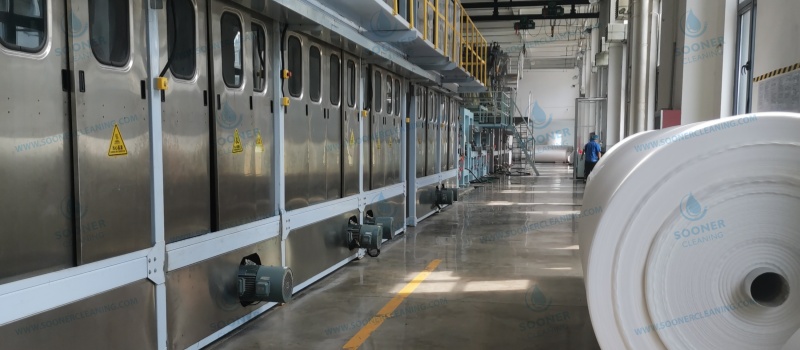Home>News
Non-woven wipes vs. traditional wipes: 6 major advantages
- 2025-04-25
Compared to traditional materials such as cotton yarn and rags, non-woven wipes are reshaping industrial cleaning standards with technological innovation:
1. Cleaning efficiency revolution
Water and oil absorption: Non-woven fabrics have a liquid absorption rate 2-3 times that of traditional wipes. For example, microfiber cloth can absorb 10 times its own weight of oil, while cotton cloth can only absorb 3 times.
Decontamination ability: Special embossed design (such as honeycomb pattern) increases the cleaning contact area by 40%, and can penetrate 0.1mm gaps to remove particles.
2. Hygiene and safety upgrade
Antibacterial performance: Medical-grade non-woven fabrics have passed ISO 10993 biocompatibility certification, with bacterial residues <100 CFU/g, while traditional wipes have a bacterial content of more than 1 million CFU/g after one week of use.
Cross-contamination: Disposable non-woven fabrics are disposable, avoiding the risk of pathogen transmission caused by repeated use.
3. Economic breakthrough
Service life: High-strength polyester non-woven fabric can be reused more than 50 times, while the average service life of cotton fabric is only 10 times.
Comprehensive cost: After a certain automobile factory switched to non-woven fabric, the annual cleaning consumables cost dropped by 28%, and the manual cleaning time was reduced by 40%.
4. Environmental compliance
Degradable materials: Bio-based non-woven fabrics (such as polylactic acid PLA) can be completely degraded within 180 days, while traditional chemical fiber rags take more than 500 years.
Carbon footprint optimization: The use of recycled polyester non-woven fabrics can reduce carbon emissions by 62% compared to traditional processes.
5. Scene adaptation capability
Smart device compatibility: The high-density flow-guiding layer design is adapted to the automatic towel dispensing machine, 1 roll of non-woven fabric = the traditional 3 rolls, and 200+ commercial projects have been implemented.
Customized service: Supports flexible customization of weight (35-130gsm), width (10-320cm), and embossed texture, and proofing can be completed in 3 days.
6. Global certification endorsement
International standards: Passed INDA/EDANA GD4, OEKO-TEX and other certifications, meeting the cross-border procurement requirements of Amazon, Walmart and other companies.
Industry case: 3M and other leading brands have used non-woven fabrics as core raw materials, driving the industry's annual compound growth rate to 19.3%.
Data confirmation: Non-woven fabrics are taking over the industrial cleaning market
Market size: In 2025, the global industrial wiping product market size will exceed US$50 billion, of which non-woven fabrics account for 68%.
Penetration rate: In high-tech fields such as semiconductors and medical care, the use rate of non-woven fabrics has exceeded 90%, and traditional rags are gradually withdrawn.
Policy drive: The EU REACH regulation clearly restricts the use of cotton rags in the food processing industry, and non-woven fabrics have become the first choice for compliance alternatives.
From oil recovery in automobile factories to nano-level dust removal in chip workshops, non-woven fabrics are redefining cleaning standards with technological innovation. Its characteristics of efficiency, safety and sustainability not only reduce costs and increase efficiency for enterprises, but also promote the transformation of global industry to green smart manufacturing. Upgrade your cleaning solution now and make every wipe a competitive value-added point!




